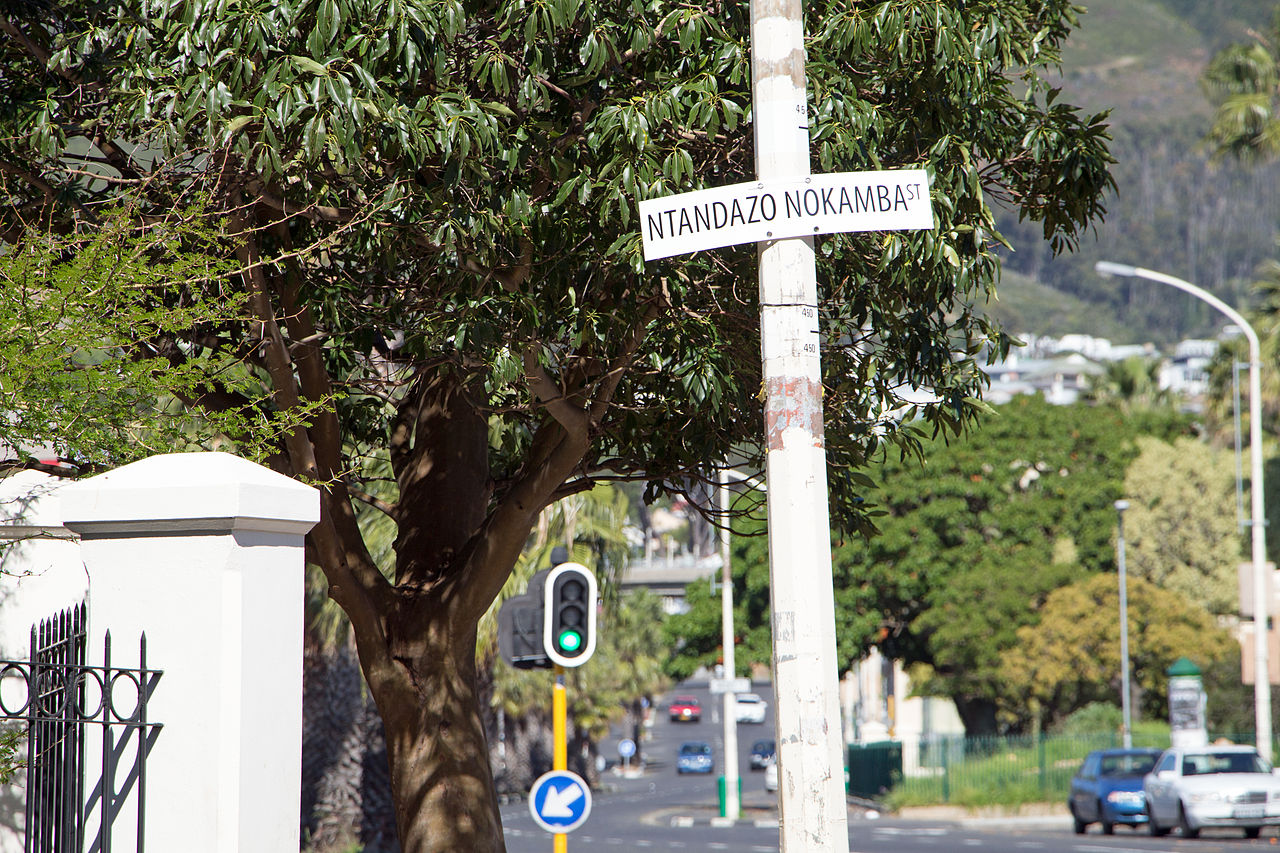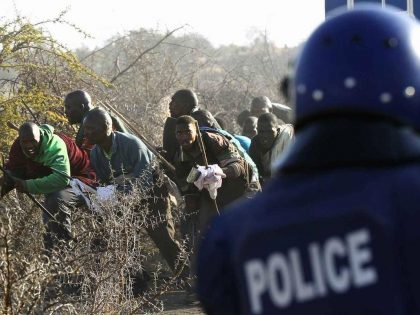Killing the collective
We know an enormous amount about what precipitated the 2012 Marikana massacre, but relatively little about what is behind the violence there since.

Protest art by anonymous artists remembering one of the casualties of the Marikana massacre, Cape Town, South Africa. Image credit Helen Online via Wikimedia Commons CC BY-SA 4.0.
In August 2021, Malibongwe Mdazo, a prominent union organizer on South Africa’s Platinum Belt, was shot and killed, allegedly by two hitmen. This was at least the second time assassins had targeted him. Two years prior, two men were convicted for a failed attempt on his life and the successful murder of one of his comrades. At the time he was killed, the union for which he worked, the National Union of Metalworkers of South Africa (NUMSA), said that he was organizing contract workers, which they believe is why he was targeted. The truth of the matter remains opaque, though, as those responsible for the murder have not been found.
As Mdazo’s history suggests, violence on the Platinum Belt didn’t end with the Marikana Massacre. Union members, local politicians and community activists have been killed in the ten years since police gunned down 34 striking mine workers. But what do these killings reveal about the politics of collective struggle on the Platinum Belt and in post-apartheid South Africa generally?
One challenge in answering this question is that while we know an enormous amount about what precipitated the 2012 massacre, we know relatively little about what is behind the violence since. Even counting how many people have been killed for their union work or political activities since 2012 is challenging because suspects may not be arrested, and it is often unclear if people are killed for organizing or for other reasons altogether in a country as violent as South Africa. Building off earlier work by sociologist Crispen Chinguno, we have identified at least 22 mine workers or union organizers who have been killed in the 10 years since Marikana. Even then, the figure almost certainly undercounts the scale of violence within the unions and understates the scope of violence on the Platinum Belt.
Indeed, the violence on the Platinum Belt extends well beyond the union movement. One species of violence not included in that count, for example, are further killings by police beyond those on August 16, 2012. For instance, in the wake of the Marikana Massacre, a local ward councilor, Paulina Masutlo, was killed by a rubber bullet fired by officers during a raid in Nkaneng informal settlement. Further afield on the Platinum Belt, Shadow Ncedani was shot by police and died in Northam, Limpopo in 2014 during a protest.
Even if not at the hands of the police, community organizing can be a deadly affair. For example, in June 2022, activist Ntombifikile Mthethwa was killed in her Marikana shack. Holding formal elected office is no less risky. An African National Congress councilor, Sabata Chale, was murdered in 2016, according to court findings, amidst a dispute over access to government-built houses and competition with the rival party, the Economic Freedom Fighters.
Still, while there have been numerous killings on the Platinum Belt, the assassination of union leaders is arguably the most potent and persistent form of violence. As recently as June 2022, NUMSA shop steward, Mahlomola Hlothoane, was gunned down by two people at his home in Rustenburg. Who killed him is not clear, but the shooting immediately followed strike action by 4,000 contractors who downed tools over a wage dispute with Impala Platinum. According to the union, like Mdazo, Hlothoane’s life was taken because he effectively recruited workers, although no arrests have been made.
Such incidents are rarely isolated, but are often part of broader contestation against companies, across unions, and even within unions. The most dramatic such example occurred in 2017 when at least six Association of Mine Workers and Construction Union (AMCU) members were killed in a series of assassinations. Such violence creates conditions for conflicting explanations. The AMCU has been accused by its own disgruntled members of planned “hits” on leaders in its ranks, who challenged the power of its president Joseph Mathunjwa or sought to expose corruption within its ranks. Mathunwja has publicly questioned whether the National Union of Mineworkers (NUM) was behind these killings given the extent to which they lost members to AMCU. He has further suggested that this was part of a “third force” strategy to promote Black on Black violence in order to undermine AMCU’s militant trade unionism. After all, he claims, its leaders defended the workers who died below the mountain in Marikana and took forward a radical wage demand in the longest strike in South African mining history in 2014. In either case, the truth of what lay behind the killings remains obscure.
As in this case, it is often difficult to identify the perpetrators or their motives. Even when there are court convictions, it doesn’t mean everything about the killings is revealed. For example, in the case of the attempted murder of Malibongwe Mdazo in 2017, whose assasination began the article, two hitmen were convicted but they never divulged who paid them. In the lead up to the trial, the state dropped charges against union members who were allegedly part of the conspiracy. Similarly, in the case of the recent murder of community activist Ntombifikile Mthethwa during the course of an apparent robbery, many are skeptical, that it was, in fact, a robbery. As one of the residents remarked at a recent launch for a book about Marikana, “She had nothing. So what were they stealing?”
Even if it is difficult to identify the causes of the violence, one clear consequence is that it prevents the formation of a collective leadership that could more effectively struggle for better conditions for the Platinum Belt’s residents and workers. To be sure, there have been historic wage victories and several important strike actions in the 10 years since the massacre. But much remains unchanged, as indicated by the profound poverty that many workers and residents continue to endure. Moreover, those being killed are often among the most talented shop stewards or community activists and organizing an effective grassroots politics is impossible when it is a blood sport.
Troublingly for South Africa, these dynamics are hardly limited to the Platinum Belt. Activists have also been killed by police, hitmen, or thus far unidentified individuals for mobilizing around environmental rights, housing rights, and basic service delivery. Politicians have been assassinated by people within their own parties and in competition across parties. And, as on the Platinum Belt, union leaders at mines of other precious metals take their lives into their own hands to organize. When violence is so rampant, suspicion is so rife, and stepping up to lead is a life or death decision, how to forge an effective collective left politics to combat South Africa’s deepening inequalities is unclear.
- This post forms part of a series on “Marikana, 10 years on.” As part of the 10th anniversary of those fateful events, we have also organized a one-day symposium. The full program is at the end of the Youtube livestream link. If you’re in Johannesburg, South Africa and plan to attend in person, register here.



